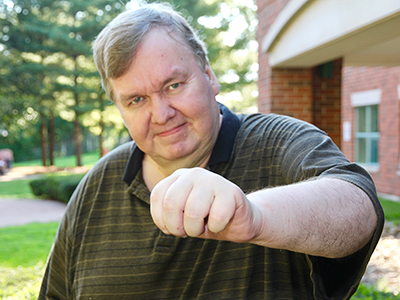

A Windsor man who regained use of his hand 23 years after having had a stroke is being described as a “remarkable” case by researchers who have tracked his recovery. The rare case challenges the conventional belief that stroke recovery occurs early or not at all.
Dr. J. David Spence, a professor of Neurology and Clinical Pharmacology at Western University’s Schulich School of Medicine & Dentistry, a scientist at Lawson Health Research Institute (Lawson) and a neurologist at London Health Sciences Centre (LHSC), is co-author of a paper recently published online in the Journal of Neurophysiology. In it, Spence describes seeing a 15-year-old patient at LHSC in 1979 who had just suffered a severe stroke with impairment that included losing the use of his left arm and hand. After 23 years of showing no improvement, the patient, John Humphrey, began swimming for exercise and weight control.
On a return visit, Humphrey surprised Spence by demonstrating partial use of his left hand. With intensive physiotherapy under the supervision of Dr. Robert Teasell, medical director of the Stroke Rehabilitation Unit at St. Joseph’s Health Care London’s Parkwood Institute and associate scientist at Lawson, Humphrey was able within two years to pick up coins with his previously non-functioning hand.
Functional MRI showed widespread recovery in both hemispheres of Humphrey’s brain, said Spence, who is also a scientist at Western’s Robarts Research Institute. Swimming had apparently triggered a rewiring within parts of the brain.

Photo credit: Paul Mayne, Western University
“It is widely believed that most stroke recovery occurs within six months, with little benefit of physiotherapy or other modalities beyond a year,” said Teasell, who is also a professor at Western’s Schulich School of Medicine & Dentistry and one of the report’s co-authors, along with Spence, Dr.Peter Sörös of the University of Oldenburg in Germany and Dr. Daniel Hanley of Johns Hopkins University.
“This case provides impetus not only to more intensive and prolonged physiotherapy, but also to treatment with emerging modalities such as stem cell therapy, exosome and micro-RNA therapies,” their report says.
“My left arm was a paperweight for 23 years and now I am able to use it. This is just the start. I am going to get stronger,” said Humphrey, who is now 37 years post-stroke and continues physiotherapy at home and at a clinic in Windsor.